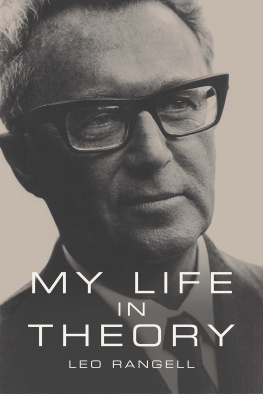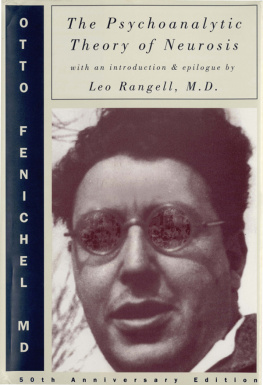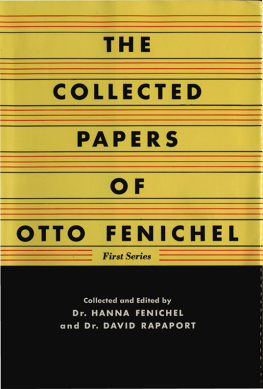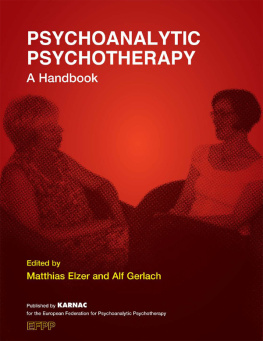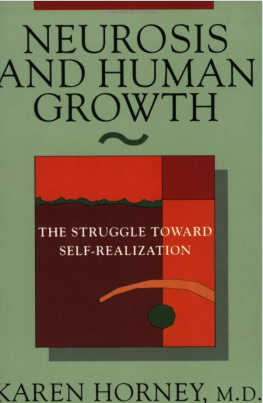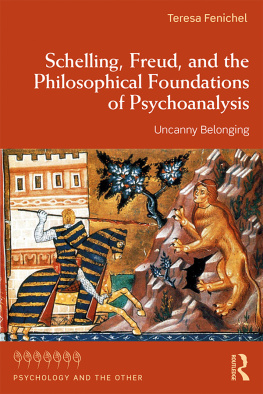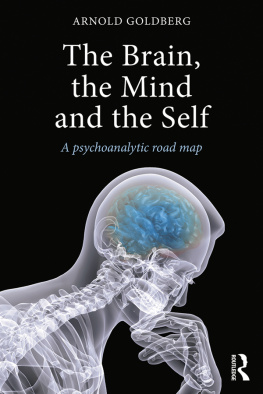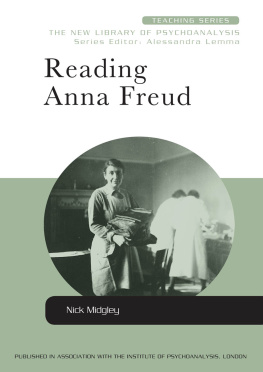THE PSYCHOANALYTIC THEORY OF NEUROSIS
THE PSYCHOANALYTIC THEORY OF NEUROSIS
50th Anniversary Edition
by OTTO FENICHEL, M.D.
With an Introduction and Epilogue
by Leo Rangell, M.D.

First published in Great Britain 1946
by Routledge & Kegan Paul Ltd
Reprinted in paperback 1990
by Routledge
27 Church Road, Hove, East Sussex, BN3 2FA
270 Madison Ave, New York NY 10016
Routledge is an imprint of the Taylor & Francis Group, an informa business
This edition published 1996
Transferred to Digital Printing 2010
1945 by W. W. Norton & Company, Inc.
Copyright renewed 1972 by Hanna Fenichel
Introduction and epilogue 1996 by Leo Rangell, M.D.
All rights reserved. No part of this book may be reprinted or reproduced or utilized in any form or by any electronic, mechanical, or other means, now known or hereafter invented, including photocopying and recording, or in any information storage or retrieval system, without permission in writing from the publishers.
British Library Cataloguing in Publication Data
A catalogue record for this book is available from the British Library
ISBN 9780415154871
Publishers Note
The publisher has gone to great lengths to ensure the quality of this reprint but points out that some imperfections in the original may be apparent.
Leo Rangell, M.D.
I am proud to introduce this epic publishing event. I cannot think of a more felicitous turn for psychoanalysis, to celebrate the end of its first century and point the way with confidence into the next, than this reissue of Otto Fenichels The Psychoanalytic Theory of Neurosis. This new reminder of the presence of Fenichel will be welcomed and appreciated by a multitude of students and practitioners who will carry the science and discipline forward into the twenty-first century. With this volume available in a modern edition as a fresh resource for clinicians and researchers, contemporary psychoanalysts can again stand upon a firm and unified foundation as they expand the borders of the science and advance the efficacy of its widespread applicability.
A teacher from the start of his career, Fenichel embodied authority at an early age not by an authoritative personality but by the force and clarity of his ideas. In this respect he followed Freud. While Freud, two generations earlier than Fenichel, is not known as a person by analysts living today, Otto Fenichel is still a personal, first-hand bridge to early psychoanalysis to a few current analysts. I met him briefly, barely, but enough for memory. While the sparsity of direct contact can be regretted, it highlights the nature of the representation that he, as did Freud, came to have on our collective intellectual life. Both Freud and Fenichel were inscribed upon my inner, cognitive life, and I believe on the minds of scores of young (now older) analysts, not by charisma of personality but from an intense and sustained influence stemming from the charisma of ideas. The former is less to be trusted or counted on than the latter. It is the body of ideas, connected with both of these antecedents, implanted by absorption and identification into the minds of generations of analysts, that has become enduring, and that shapes the way of thinking and feeling that makes a psychoanalyst.
Otto Fenichel bisected the psychoanalytic century. Looking back, he summarized and integrated, as no one else had, what went before. Looking ahead, he presaged much of what was to follow, the debates as well as the contents. This book, culminating Fenichels scientific life, was published in 1945, exactly halfway between 1895 and 1995, dates we can consider the borders of this psychoanalytic century. It is also exactly 50 years since the publication of this book. The book had a gestation period for many years, and saw its final form in the present version completed and published one year before Fenichels untimely death at the age of forty-nine. There were two prior publications in the thirties which Fenichel considered preliminary to this final form. The first was a German work on specific individual neuroses, published in 1932, and the second, an English translation of this by Lewin and Zilboorg, published first in 1934 as papers in The Psychoanalytic Quarterly, and in book form that same year by Norton under the title Outline of Clinical Psychoanalysis. I remember, as a resident in psychiatry in 1940, browsing through the Quarterly in the psychoanalytic library of the Psychiatric Institute at Columbia, which had just acquired the Freud library the year after Freuds death by the quick thinking and ingenuity of Jacob Shatzky, Columbias creative librarian at that time. It was then that I met the name of Otto Fenichel for the first time.
Leafing through the pages, either a few at a time or as individual chapters, I experienced the immediate effects of correct interpretations. Fenichels brief clinical extracts or examples in support of psychoanalytic propositions, directed to a recipient with an introspective ego but almost a tabula rasa as far as analytic knowledge or sophistication or experience was concerned, elicited spontaneous affective responses of of course. As strange as the explanations were to conscious surface thinking, they applied logic. They were right in making sense of the novel clinical phenomena to which I had just begun to be exposed, which many of these concepts aimed to explain. To me, Fenichel was at once equated with psychoanalysis.
Asked to write a second edition of the specific book on individual neuroses, Fenichel preferred to write a new book, which would update the clinical syndromes and add the subject of general theory as well. The Psychoanalytic Theory of Neurosis, expanded from the previous versions to thus embrace both general psychology and psychopathology, became the centerpiece of my intellectual armature and theoretical credo as a psychoanalyst throughout my professional life. Psychoanalytic life, as lived by one immersed in continuous practice, theoretical debate, and organizational and administrative leadership conflicts for the entire half-century since that date, has been turbulent, stormy, never static. The literature of psychoanalysis, with the multiple theoretical paths it conveys, has exploded like a mushroom cloud since 1945, greatly influencing the intellectual life of the twentieth century. The straightforward account of the theory of psychoanalysis that this book contains has been buried under mountains of printed pages, which in their general thrust dispute it, rival it, discount it, or have come to ignore it. Yet under this weight and barrage, Fenichel has retained its spark of life and vitality.
With its roots in the mid-thirties, and its fruition a decade later, this creative work coincided with the finishing of Freuds two large phases of theory-building. Modifying and extending his first discoveries and formulations, Freud had achieved the completion of his metapsychology in the twenties and thirties, adding the instinct of death and aggression (1920, 1930), describing and filling in the ego as counterpart to the id (1923), and adding the superego and its role in life beyond the pleasure principle. The structural view had been put into place, adding to the previously described metapsychological points of view, the dynamic, topographic, genetic, and economic. The theory of anxiety was significantly altered in 1926, in the center of this creative burst, and stood as the base of the new formulations and orientation. Nothing was neat, however. The topographic and structural systems did not overlap. Secondary process was seen to be used in the unconscious ego, and primary process mentation played a role in various mental states and psychic activities in preconscious and conscious life.
Next page

